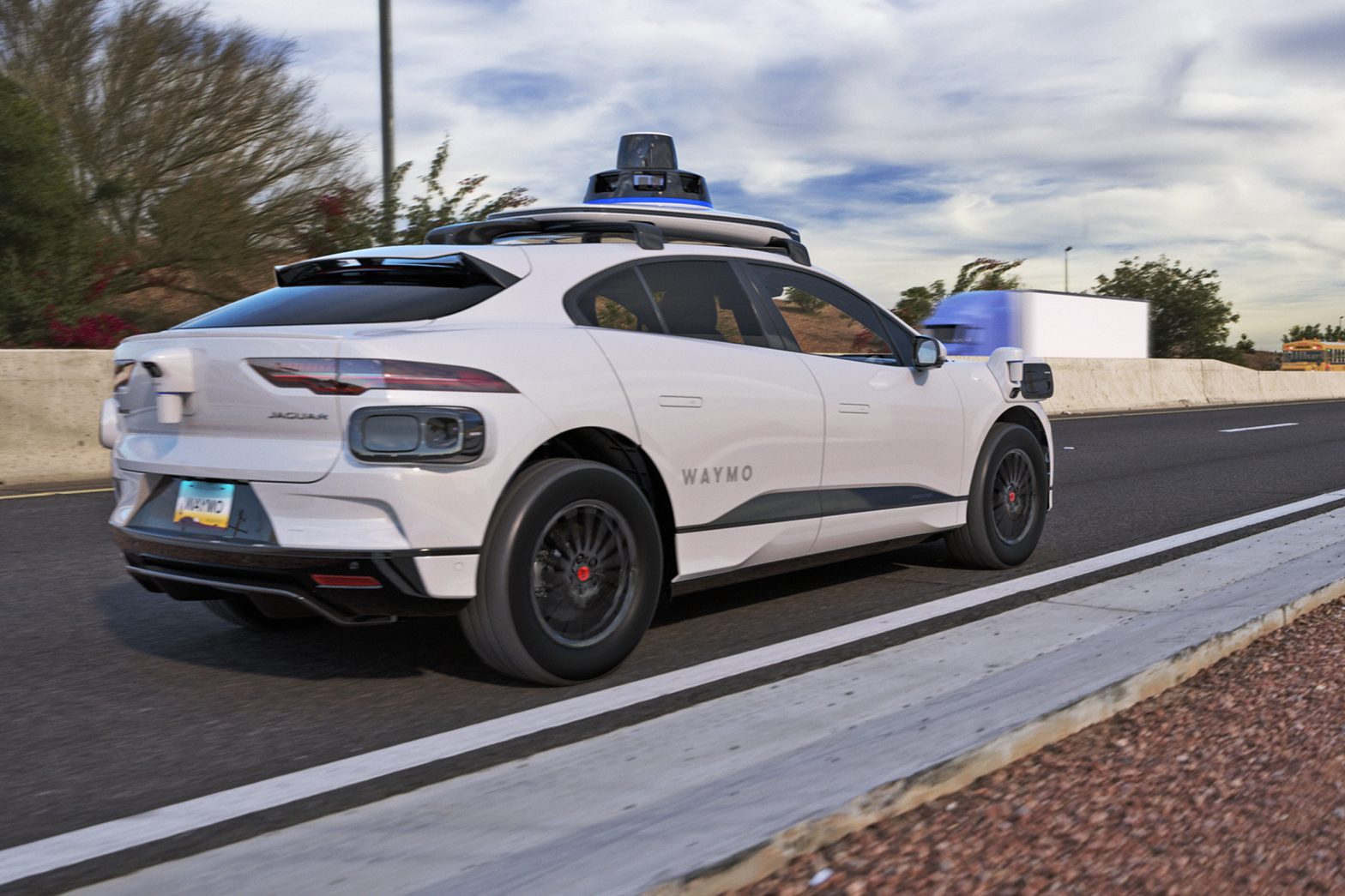/
The company is testing highway trips with its employees as passengers, but it expects to allow non-employees access in the near future.
Share this story
:format(webp)/cdn.vox-cdn.com/uploads/chorus_asset/file/25211546/Waymo_One_I_PACE_on_Freeway_.png)
Waymo’s days of avoiding freeways are finally coming to an end. The Alphabet-owned company announced today that its fully driverless vehicles would begin tackling the higher speeds of Phoenix’s freeways, all while ferrying passengers to and from their destinations.
Waymo says it will approach freeway trips with some degree of slowness — not in terms of vehicle speed, but with regard to which passengers it accepts. The company will start by offering driverless rides to just employees and their friends. Later, paying passengers who use the company’s Waymo One ridehailing app will get to travel on the freeway if their trip requires it.
Self-driving cars typically skip freeways, preferring to stick to lower-speed local roads. This has not gone unnoticed by customers of robotaxi services, who often note their trips can take longer because the vehicles are prohibited from using routes that travel on highways.
In contrast, most automakers only allow their customers to use partially autonomous advanced driver assist systems, with features such as adaptive cruise control and lane-centering, on divided, limited-access highways.
:format(webp)/cdn.vox-cdn.com/uploads/chorus_asset/file/25211591/Sky_Harbor_to_Scottsdale_Map.png)
Critics have cited the avoidance of highways as evidence that autonomous vehicles aren’t ready for the realities of driving. But self-driving truck companies have largely stuck to highways in their testing — though only with human safety drivers in the front seat. Waymo has tested its autonomous trucks on highways in Texas, for example — though the company has recently pivoted away from trucking in favor of passenger trips.
Waymo says that as it increases the number of miles it drives on highways, it will be collecting data and feedback from its employees who use the vehicles as passengers. The company says it eventually hopes to provide faster routes, especially for those customers using the driverless vehicles to travel to Phoenix’s airports. (Airport trips remain the main moneymaker for ridehailing services of all stripes.)
